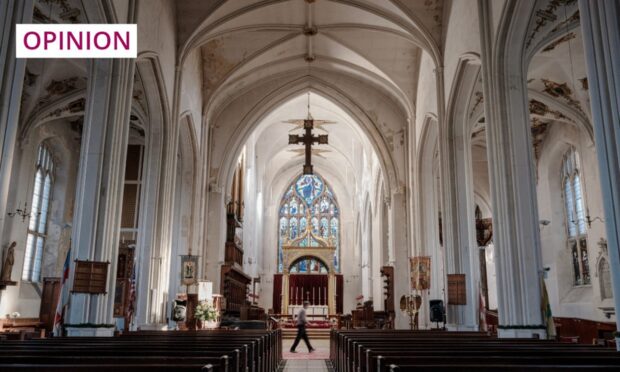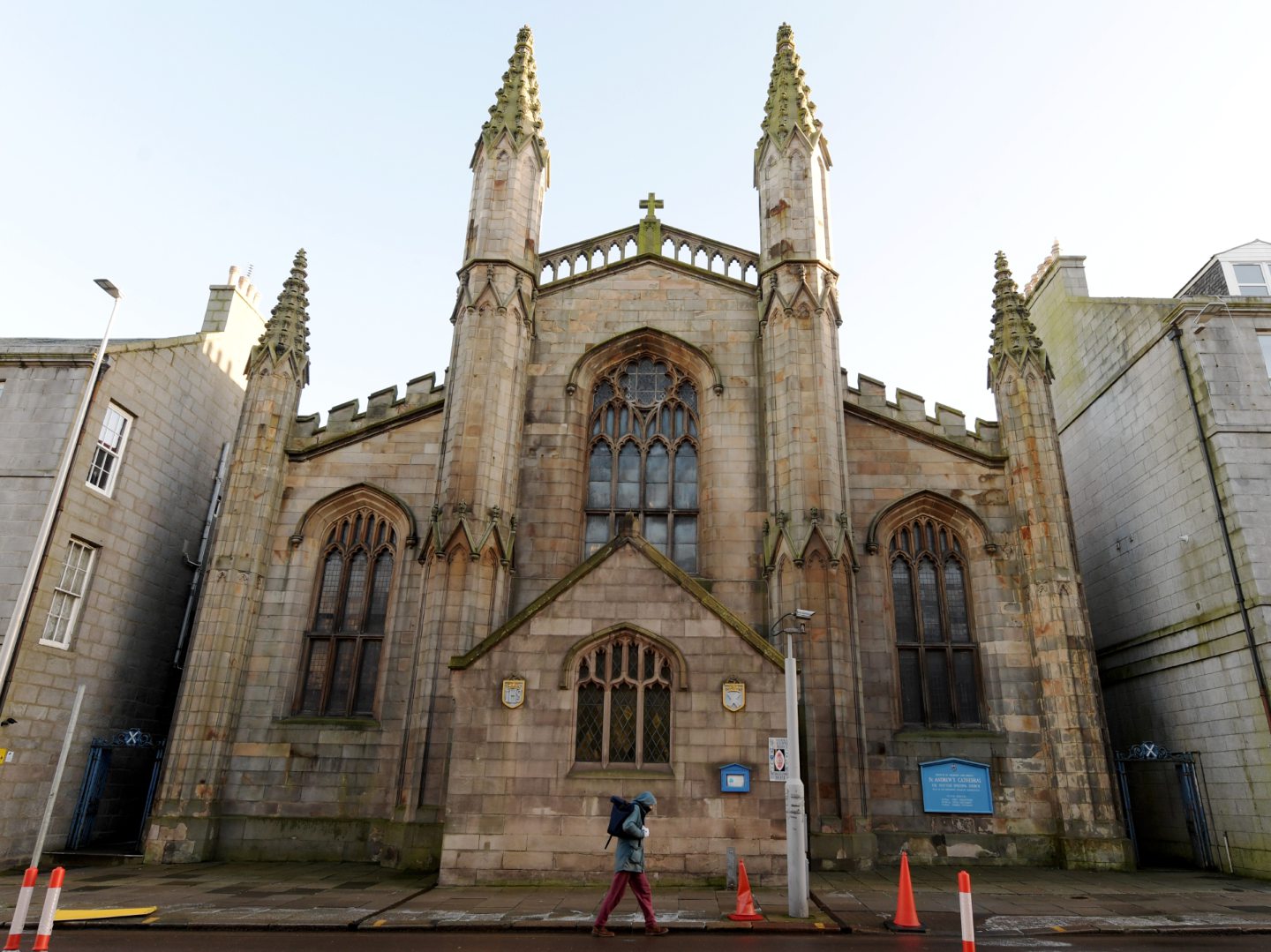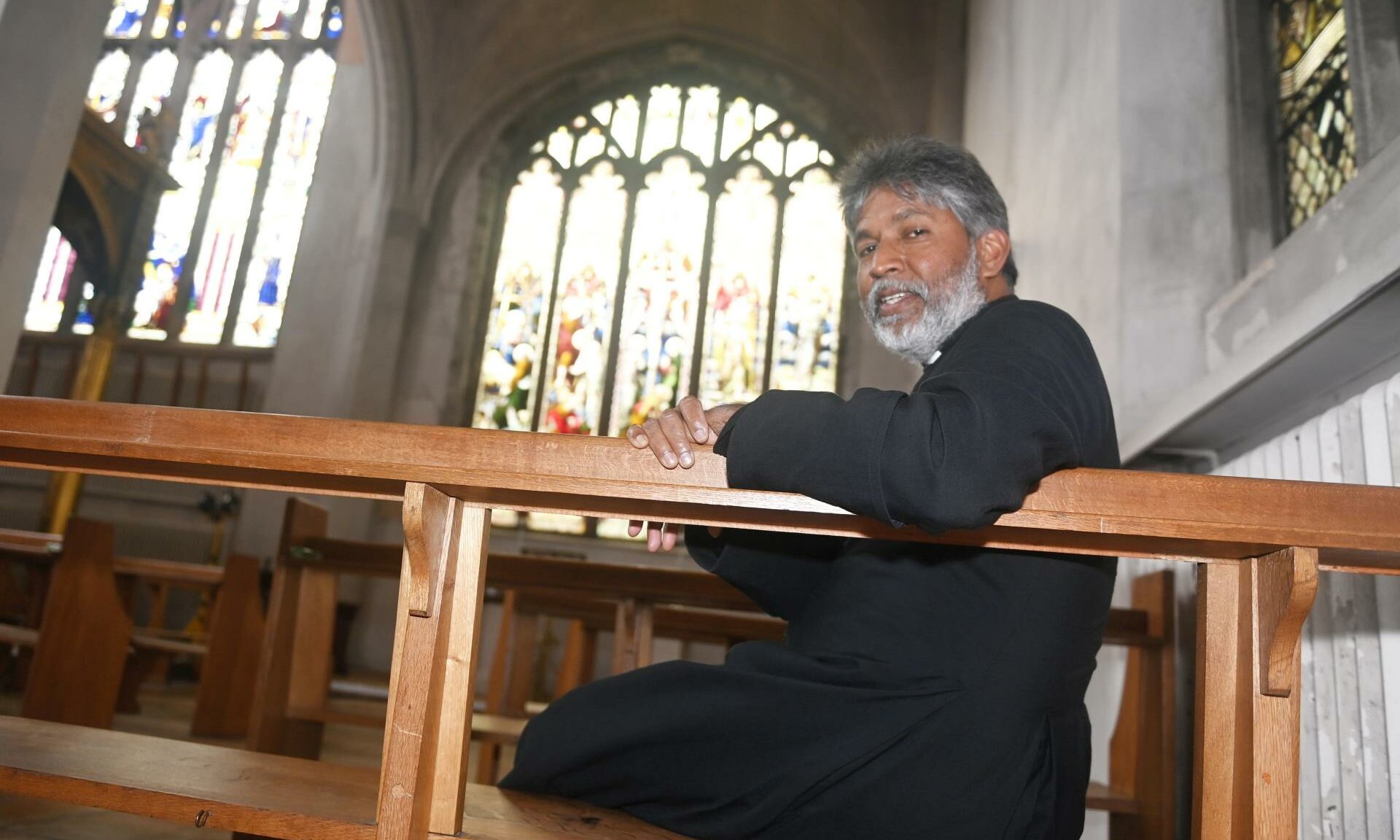The current provost and rector of the Cathedral Church of Saint Andrew on King Street is Isaac Poobalan, a generous, smiling, open-hearted and deep-voiced man who came to Scotland from southern India in the late-1990s.
Poobalan tells me he was warmly welcomed by the traditional communities he found in Aberdeen. But he finds himself now navigating some difficult history.
The cathedral’s story is a remarkable one, spanning the religious and political evolution of both Scotland and the US. In 1784, Samuel Seabury was consecrated as the first Episcopal bishop of a newly independent United States of America.
American bishops, until that point, were still ordained in London through the Church of England. To avoid swearing allegiance to an English king, Seabury was ushered northward to the Granite City. It is Seabury’s ordination in the upper room of Bishop John Skinner’s home at Longacre that led to the commissioning of St Andrew’s Cathedral as it stands today.
In 1938, a little over 150 years after Seabury’s consecration, a young John F Kennedy would visit. He was accompanying his father, diplomat Joseph Kennedy, who laid the foundation stone of the Seabury Memorial where it can still be seen, in the light from the cathedral’s towering, east-facing stained-glass windows.
And, in 1944, another future president, General Dwight Eisenhower – then supreme commander of the allied expeditionary force – presented the cathedral with his personal flag of the colours of the US regiments, a replica of which still flutters occasionally in the draughts rushing in from King Street.
From architecture to intergenerational trauma
The ceiling is covered on one side by the crests of the 48 states of a 1930s USA, and on the other by the clan shields of the Jacobite supporters who would meet at Braemar to raise the standard of the Old Pretender, James Francis Edward Stuart, in 1715.
The cathedral was designed and built by that most famous of Aberdeen architects, Archibald Simpson, who protested against the use of sandstone on its King Street-facing facade.
Simpson’s protests were overruled due to cost, and the finished building, completed in 1817, stands in three sides of Aberdeen granite and one of sandstone. A porch extension was added in 1911 by Robert Lorimer, a prominent architect of the Gothic Revival movement, and the building interior renovated by architect Ninian Comper in the 1930s to mark Seabury’s ordination anniversary.
But it is that unusual confluence of histories, rather than its architectural make-up, which makes the church so noteworthy, and its role today in helping to address intergenerational trauma.
Much-celebrated bishop was a slave owner
Samuel Seabury, so much the focus of celebration for the cathedral, was a slave owner. When he married his wife Mary Hicks, his father-in-law gifted the newlyweds with an enslaved African-American woman.
A dispute over Hicks’s promise to provide a given level of financial support after the marriage led to the good Christian Seabury household taking on a total of four slaves in compensation, three of whom were later transferred back following Hicks’s death. When Seabury himself died in 1796, a probate inventory of his estate included a 38-year-old woman named Nell, and a nine-year-old girl called Rose.
So much water under the bridge, we might say, but old wounds fester, passed on down the generations to the descendants of both victim and perpetrator
What became of Nell and Rose we can only guess, but it would be almost another 70 years before the 13th amendment would abolish slavery, and another 100 years, still, before the Civil Rights Act would end segregation in modern America.
So much water under the bridge, we might say, but old wounds fester, passed on down the generations to the descendants of both victim and perpetrator. With a contemporary congregation that is made up of traditional north-east communities as well as a burgeoning Nigerian one, the cathedral’s confluence of histories has never been more germane.
A symbolic turning point
Heritage tends to come to the fore at times of change, as do questions of history, identity and belonging. But heritage is not about preserving a frozen image of the past. It is about asking sometimes difficult questions of ourselves, so that we can move toward the future.
Part of Isaac Poobalan’s remit as rector is to help to bring the cathedral’s very different communities together in worship under the same roof. No stranger to a challenge, while rector at St John’s, he invited in the local Muslim community to worship in their own faith and, more recently, has welcomed Syrian New Scots and Ukrainian refugees.
He became Provost of St Andrew’s in 2015 and, in that same spirit of openness, in 2017 invited US presiding bishop Michael Curry to visit the cathedral.
Curry announced to the congregation that it was “good to come home”. As an African-American, his presence in the cathedral, so irrevocably associated with his 18th-century predecessor Samuel Seabury, marked a symbolic turning point: an invitation to define ourselves not just by what or who we have been, but who we wish to become in a city that is much more than granite, and about much more than its past.
Ian Grosz is a freelance researcher and writer based in the north-east of Scotland



Conversation